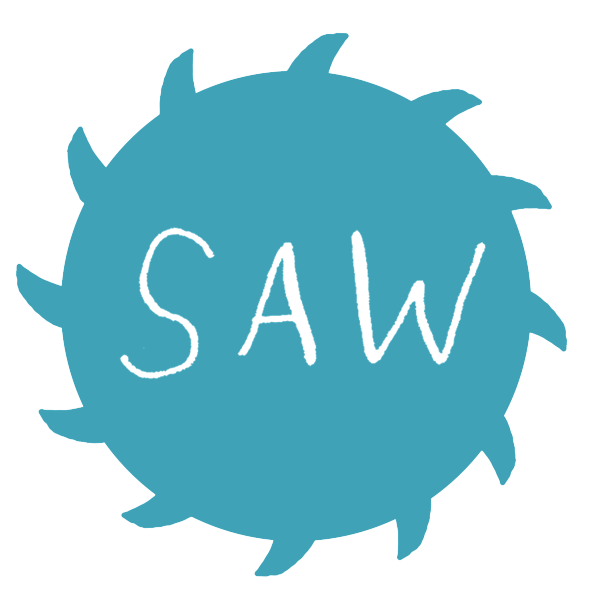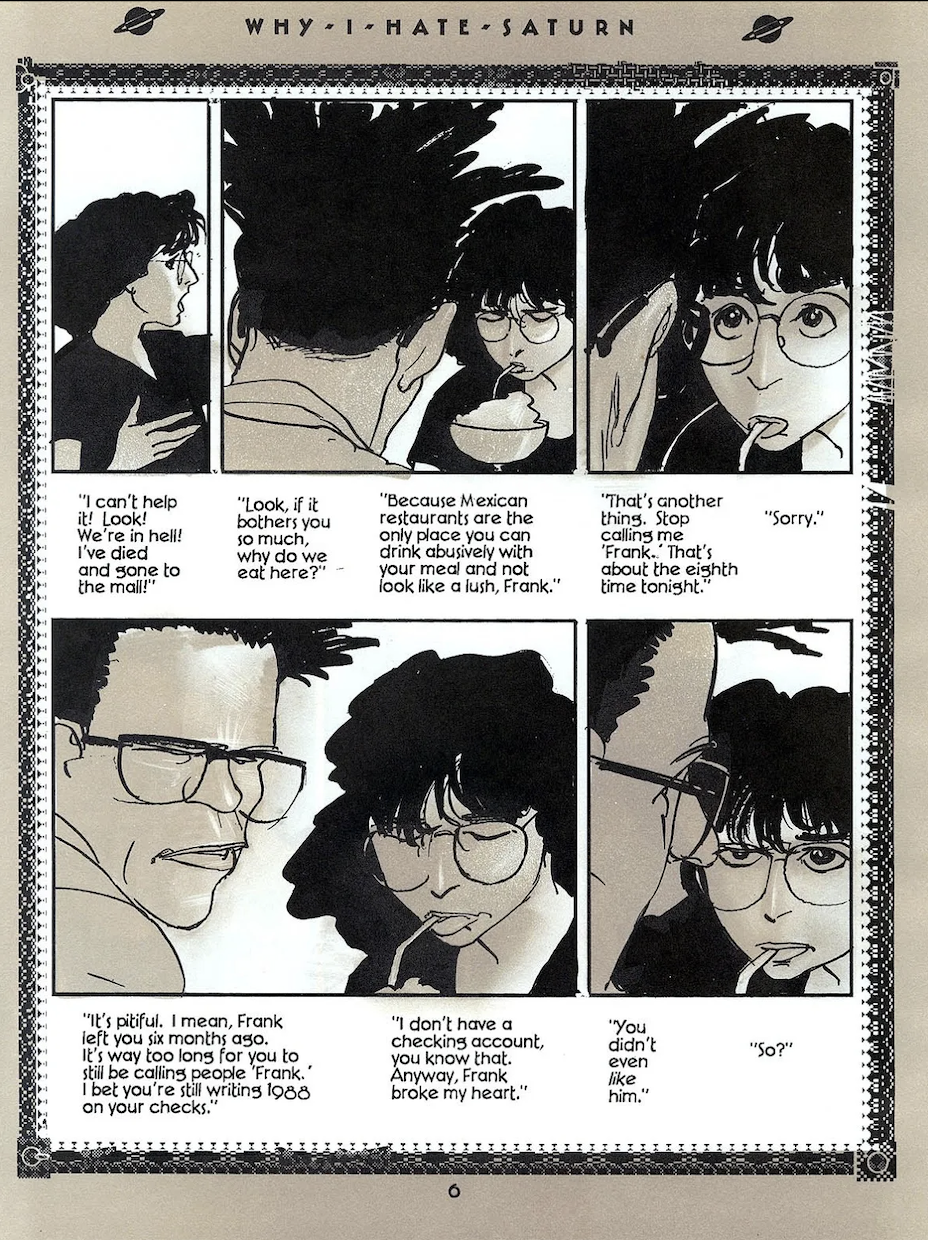Too much dialogue? Just talking heads?
Conversation is a part of life. Let's bring readers into the life of our comics.
It comes up a lot where people think maybe they have too much dialogue, too many “talking heads". It can happen, but it doesn’t always happen.
The famous way out of this is Wally Wood’s “22 panels that always work when some dumb writer has a bunch of lame characters sitting around and talking for page after page…” (We’re using the Aud Koch example below…)
But what if your characters WEREN’T LAME? And what if you weren’t a DUMB WRITER?
Like, for instance, what if your dialogue was INTERESTING? What if readers enjoyed being in the conversation with your characters?
Maybe the problem isn’t that we have talking heads, maybe it’s that they’re talking about things uninteresting to the readers…
Here are some great examples of talking heads, all of which are funny or interesting or something…
Here’s a great Lynda Barry comic, two kids at bed time obsessing about life.
There’s so much movement of line and shifting of energy in this comic, as the kids philosophy is all over the place too. I suppose you could say there are a couple different angles in the Wally Wood sense, but not really. Mostly it’s just static.
Here’s MK Brown, riffing on Freud about women:
Look at those great subtle facial expressions. See the characters not connect, the enormous gap of history and generations between the characters. That’s what we follow here. Read more of this by MK Brown here.
That gap is present here, too in Ruth Lynn’s comic from T*ts and Cl*ts, 1980:
and for more stories like this (more massage parlors), Ruth Lynn again, on an airplane…
Lynn’s style is sketchy and sometimes dense, but also loose and lighthearted. It’s not hard to stay engaged in this conversation…
We should probably note that the main character has a stork or gull or something on her head! So maybe we do need some tricks to keep things interesting…
Changing tone and continents, how about these two, author and editor, from from Scenes from Schlechtfreund By Vojtěch Mašek & Džian Baban, Translated from Czech by Martha Kuhlman & David Randl
Note that it’s a single image photocopied over and over again. This is just three pages. It goes like this for dozens of pages. It’s absurd, and you just roll with the repetition…
Find more HERE.
Most of the above rely on static shots and interesting dialogue, but you can go the cinematic route, and change the panel composition often to keep things lively.
Here’s Kyle Baker’s amazing Why I Hate Saturn, which is largely dialogue for 2/3 of the book… Baker draws great “acting” and breaks up the text and images completely here, and with both “snappy” dialogue and large blocks of dialogue we find simply reading becomes a delight…
Finally, Alison Bechdel’s Are You Not My Mother? is definitely in the running for award for most shots of a character on their therapist’s couch, but these scenes are compelling too because Bechdel’s internal investigations are interesting, plus she bookends them with big imagery of either dreams or history…
Very wordy and talking-heads-y, but here are a couple of the pages before and after this scene…
A dream…
And a historical meditation…
So, in short, you CAN have talking heads, you CAN have lots of dialogue, but how you make it interesting is the trick.
We’d love to see what you do!
Thanks for reading!
Check out some of our courses:
WANT TO MAKE AND READ MORE COMICS?
Do you have a story inside you that’s just itching to come out, but want some guidance to help push it out?
Learn more about intensive comics learning with teachers at SAW by checking out SAW’s Year-Long Intensive Program and our Six-Month Graphic Novel Intensive.
Be sure to also check out our Online Courses, since some courses are offered year-round and are always enrolling!
Our Graphic Memoir Intensive runs year round and is always enrolling. It includes access to a vibrant working community, twice-monthly live online check-ins, weekly prompts, and access to SAW’s Monthly Pro Calls!
Our Comics Flow Group, or SAW FLOW MEMBERSHIP, is also year-round and always enrolling and is SAW's MOST AFFORDABLE course option with access to Monthly Pro-Calls!
And, of course, come see what we’re all up to on SAW's Mighty Network anytime!














